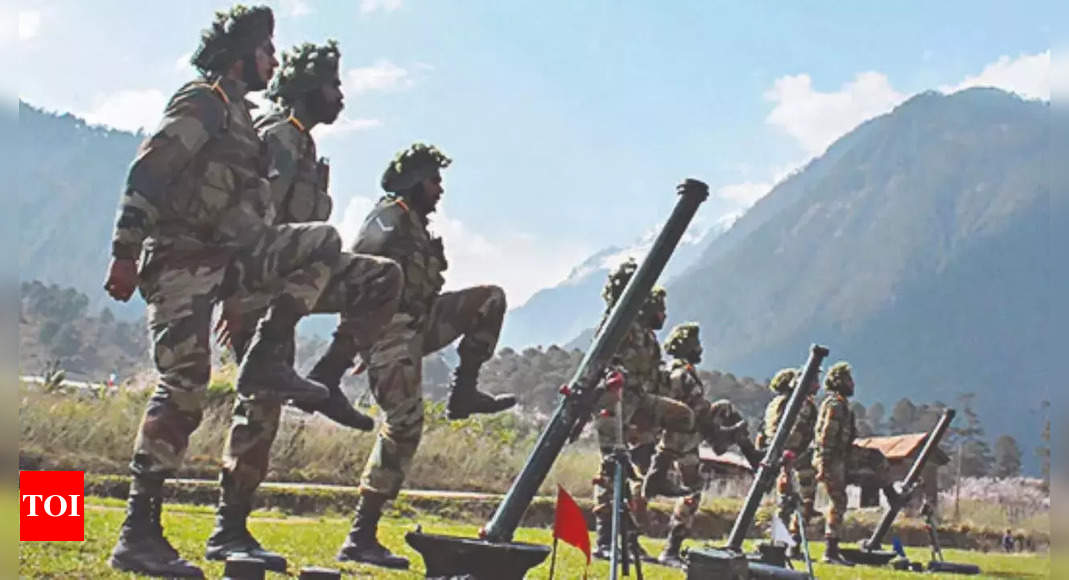[ad_1]
NEW DELHI: India is keeping a hawk-eye on Chinese troop movements across the entire Line of Actual Control after the major clash last week in Yangtse in the Tawang sector of Arunachal Pradesh, while the Army recalibrates deployments during the ongoing transition to the annual ‘winter posture’.
“We are ensuring the readjustments of troops, combat reserves, logistical bases and ammunition dumps due to the harsh weather and terrain conditions does not impede our response time and capability to handle any contingency,” a senior Army officer told TOI on Wednesday.
This is true for all the three sectors of the 3,488-km LAC, western (Ladakh), middle (Uttarakhand, Himachal) and eastern (Sikkim, Arunachal). Special attention, of course, is being paid to eastern Ladakh, where both sides continue to keep around 50,000 soldiers forward deployed for the third successive winter, and Arunachal.
“The focus is also on the 23 major areas of dispute along the LAC from Demchok and Chumar in eastern Ladakh to Yangtse and Fish Tail-1 and 2 in Arunachal. The stress is on survivability and preservation of combat capability,” another officer said.
After making multiple incursions into eastern Ladakh in May 2020 and the continuing standoff there, the People’s Liberation Army (PLA) seems to have shifted its attention to the 1,346-km stretch of the LAC in the eastern sector.
In addition to the consolidation of military positions and infrastructure build-up, the PLA has deployed another three to four combined armed brigades opposite Arunachal and Sikkim across the LAC for the last three months. “There is no tangible reduction in PLA forces,” the officer said.
The Tawang sector is heavily guarded by India, with a “very high troop density”, given that China claims it as ‘South Tibet’. Tawang also provides security to Bhutan on its eastern flank. “The Indian occupation of the Yangtse plateau during the long Sumdorong Chu stand-off in 1986-1987 rankles the PLA. With our positions on the peaks, it gives us tactical advantage to look deep into Chinese territory,” another officer said.
“We are ensuring the readjustments of troops, combat reserves, logistical bases and ammunition dumps due to the harsh weather and terrain conditions does not impede our response time and capability to handle any contingency,” a senior Army officer told TOI on Wednesday.
This is true for all the three sectors of the 3,488-km LAC, western (Ladakh), middle (Uttarakhand, Himachal) and eastern (Sikkim, Arunachal). Special attention, of course, is being paid to eastern Ladakh, where both sides continue to keep around 50,000 soldiers forward deployed for the third successive winter, and Arunachal.
“The focus is also on the 23 major areas of dispute along the LAC from Demchok and Chumar in eastern Ladakh to Yangtse and Fish Tail-1 and 2 in Arunachal. The stress is on survivability and preservation of combat capability,” another officer said.
After making multiple incursions into eastern Ladakh in May 2020 and the continuing standoff there, the People’s Liberation Army (PLA) seems to have shifted its attention to the 1,346-km stretch of the LAC in the eastern sector.
In addition to the consolidation of military positions and infrastructure build-up, the PLA has deployed another three to four combined armed brigades opposite Arunachal and Sikkim across the LAC for the last three months. “There is no tangible reduction in PLA forces,” the officer said.
The Tawang sector is heavily guarded by India, with a “very high troop density”, given that China claims it as ‘South Tibet’. Tawang also provides security to Bhutan on its eastern flank. “The Indian occupation of the Yangtse plateau during the long Sumdorong Chu stand-off in 1986-1987 rankles the PLA. With our positions on the peaks, it gives us tactical advantage to look deep into Chinese territory,” another officer said.
[ad_2]
